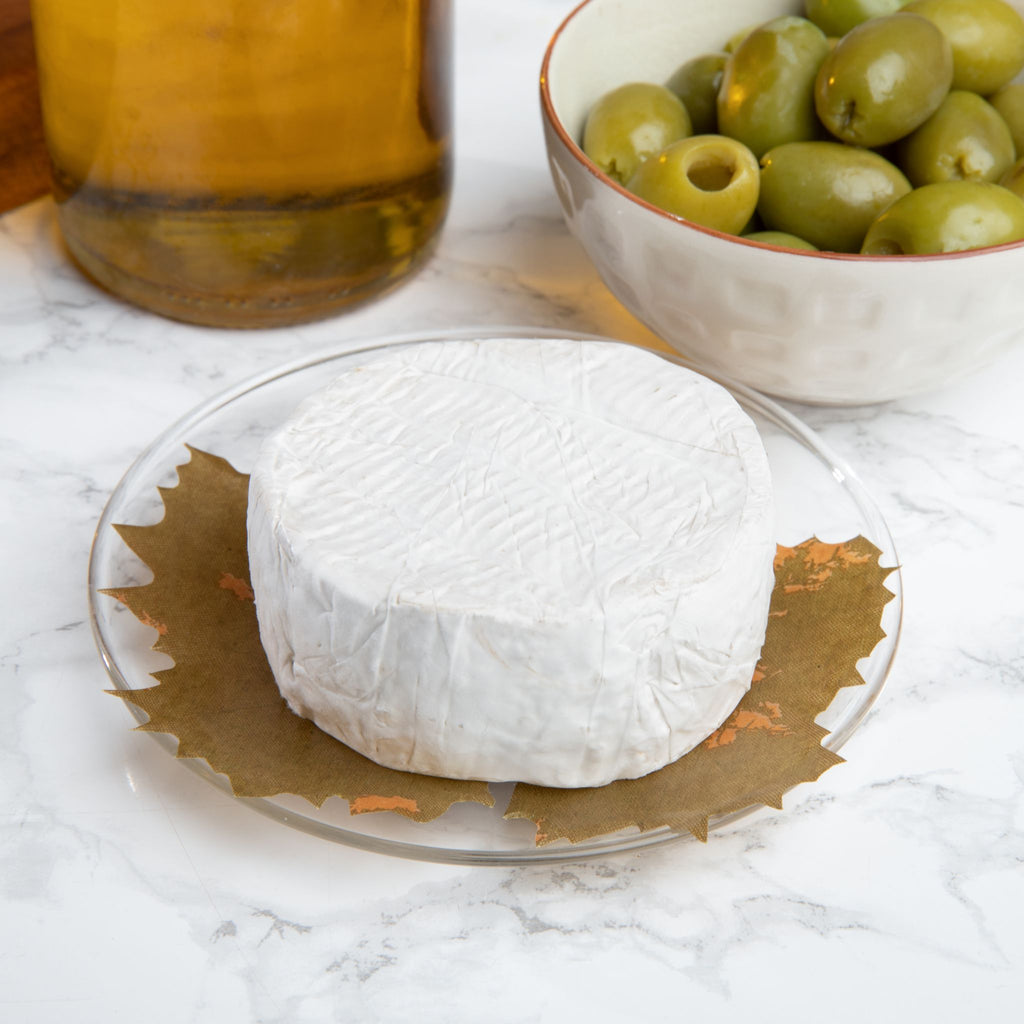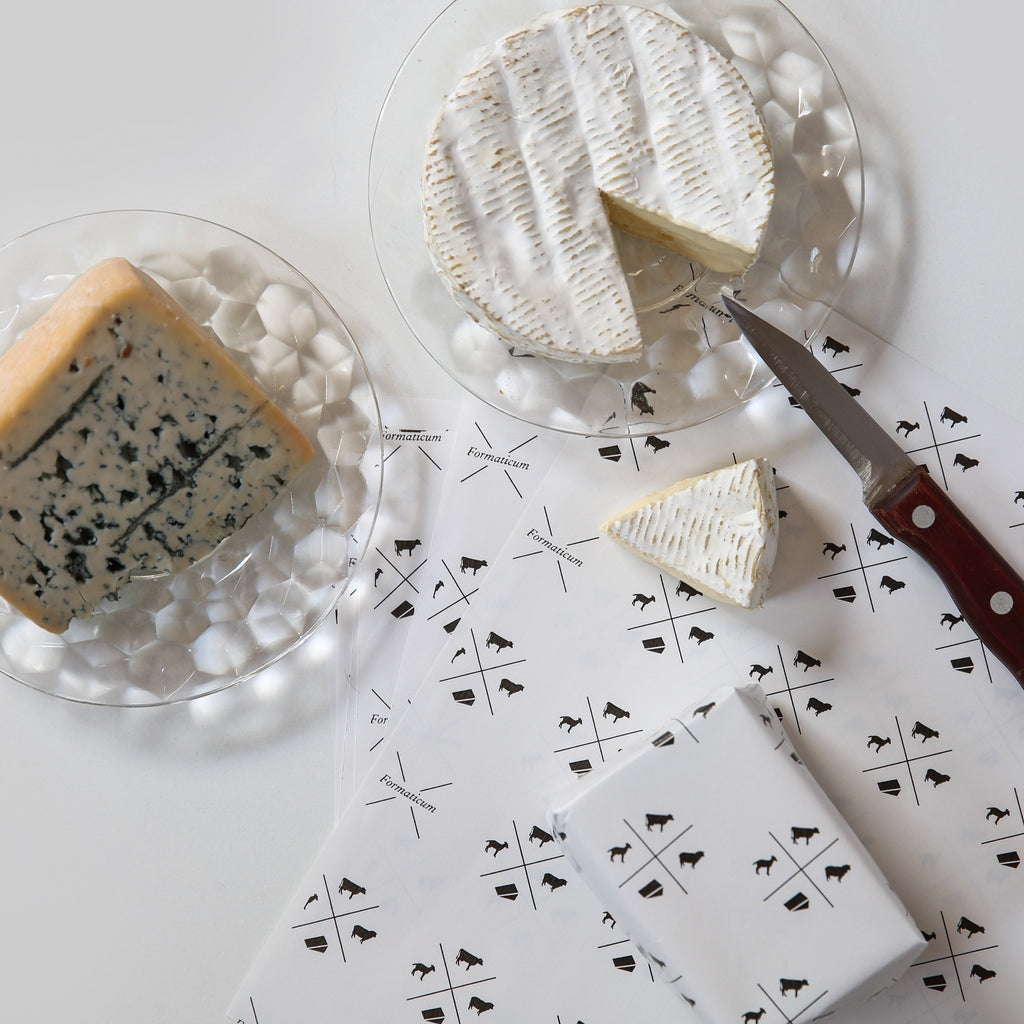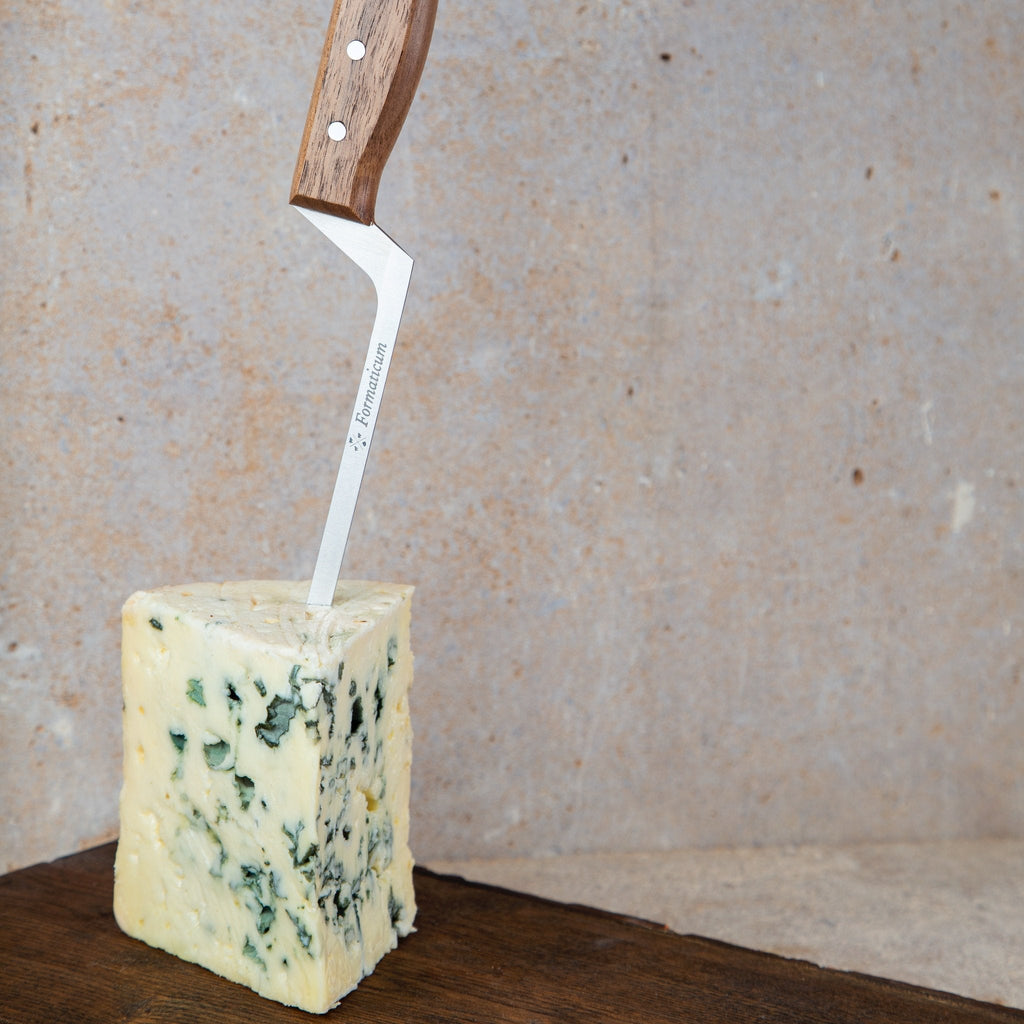What Is Rennet? Everything You Need to Know

We all know the popular nursery rhyme about Little Miss Moffett eating her curds and whey, but you might not be quite as familiar with rennet. Simply put, rennet is an enzyme that coagulates milk and separates it into the aforementioned curds and whey. But where does it come from, and what does it do for the cheese?
Coagulation is the first step of cheesemaking, separating the solids (curds) from the liquid (whey) so that the solids can be manipulated in different ways, eventually resulting in cheese. Some cheeses are lactic- or acid-coagulated, meaning that the action is caused by lactic acid bacteria present in the milk. But many cheeses, including most hard or aged cheeses, are made with rennet. Rennet-coagulated cheeses use animal (or "traditional"), microbial, or vegetable-based rennet.
Traditional rennet is derived from the 4th stomach, or abomasum, of a young ruminant animal. Vegetable-based rennet can be derived from plant-based sources like thistle, and microbial rennet is grown in a lab using live organisms like mold, yeast, or fungi.
Each version has benefits - while traditional rennet is better for longer-aged cheeses, microbial rennet is suitable for vegetarians, and is also cheaper to produce, which decreases the cost of cheesemaking. Thistle rennet is more common in torta-style cheeses from Spain and Portugal, and lends an herbaceous flavor to the cheese. Some cheesemakers use combinations of different types of rennet to achieve their desired texture and flavor.
If you're interested in tasting some cheese made with different types of rennet, consult your local cheesemonger! They are a wealth of knowledge and can guide you through your options, as well as give you samples to taste. If you're searching for a vegetarian-friendly cheese, we recommend that you try an American cheese! The USA produces the highest number of vegetarian rennet cheeses in the world, second only to Portugal. If you don't have access to a cheesemonger, check the packaging on your precut cheeses - it will likely denote what kind of rennet is used during cheesemaking.
Once you've selected your cheese, don't forget to add a package of Formaticum Cheese Storage Bags to your basket as well, to preserve the flavor of your newest discovery.
Be Moine, Valentine: Give Them Rosettes Instead of Roses
This Valentine's Day, give them what they really want: cheese.
A bouquet of roses is a time-honored Valentine's Day tradition, but what about giving your special someone an 800-year old Swiss cheesemaking tradition? Tête de Moine rosettes are the perfect gift for the cheese lover in your life.
Tête de Moine is a raw milk cheese from Switzerland that was first made by the monks of the Bellelay Abbey in the Jura in the 12th century. Made from whole milk produced by cows who freely graze on fresh Alpine grasses and herbs, the flavor is slightly funky but not overpowering. Each bite boasts floral and brothy notes and flavors of sweet cream, toasted nuts, and stone fruit, along with a dense, fudgy texture. There are less than 10 creameries still producing this historic mountain cheese. As it ages on spruce boards for a minimum of 2.5 months, each wheel is brine-washed periodically to create a savory, slightly sticky rind.
Tête de Moine translates to "monk's head," a reference to the way it is traditionally shaved on a girolle rather than cut with a knife, resembling the top of a monk's head. Curling Tête de Moine into paper-thin rosettes allows the cheese to melt in your mouth, coating your entire palette with flavors of Swiss terroir. It also appropriately pairs well with chocolate!
For best results, we recommend making rosettes on your girolle very soon after you remove the cheese from the fridge, while it is still cold. When you're done curling, remove the remaining piece of cheese from the girolle and place it inside Formaticum Reusable Cheese Storage Bags to keep it fresh and healthy until next time!
Honor the Cheesemakers (& Importers, & Distributors & Mongers…), Save Your Cheese with Formaticum

If you've been to a cheese shop or counter recently, you may have suffered some sticker shock - it's no secret that everything has gotten more expensive lately, but how much do you really know about the cost of real cheese? Good cheese usually isn't cheap, but the sticker shock is also directly connected to consumers' removal from the food system as a result of big box grocery stores and industrialization. In order to reconnect with our cheese, and develop a deeper appreciation for these products, we must first understand just how much work, passion, and knowledge is required to produce a wheel of real cheese and get it into our hands. Good cheese is an investment! Keep reading below to learn what it takes to get cheese from the farmer to your fridge, and how you can protect your investment and maintain your cheese's flavor. The price tag for real cheese represents not only the cheese itself, but the collective skill and labor of everyone involved in the process.
It would take days to describe every detail of how a wheel of cheese gets from the maker to the counter, but what's important to focus on is the number of hands that (literally and metaphorically) touch the cheese on it's journey to the shop. It's also important to remember that higher quality ingredients, equipment, and feed for the animals, for example, are expensive. There is no substitute for human skill and intuition when it comes to making and aging cheese, and employing humans instead of robots is expensive. And no robot can fully understand hundreds of years of cheesemaking tradition and technique.
We rightfully celebrate the farmer and the cheesemaker and the affineur, but we should also consider the people who clean the vats, and mop the floors, and wrap the cheeses, just to name a few. Additionally, the longer the cheese is aged, the fewer wheels of cheese can be produced, meaning each wheel will be more expensive but taste better than a cheese that was aged at an accelerated rate to make room for more cheese in the caves for faster cash. Longer, more deliberate aging also represents a significant cash flow issue for cheesemakers and affineurs, since they do not get paid until the cheese is sold - and this labor of love is often a skill handed down through generations in family businesses! So the price tag does not only represent the cheese itself, but the sometimes hundreds of years of technique and tradition that is present within that wheel.
Once the cheese is ready for sale, it needs to be packed up and moved from the aging facility to its next destination, which might be a port where the cheese will loaded onto a container by hand to be shipped overseas. Aside from the cost of transport to the port and ocean freight, importing cheese has costs associated with customs paperwork and FDA involvement, among other things. The cheese then spends 6 or more weeks in a temperature-controlled shipping container traveling to its next destination, where it will be unloaded by more human beings and cleared by the FDA. Since cheese is a living product, it must be meticulously packed up and maintained during transit so that it will arrive in good condition. It's then picked up by distributors, who need to make a profit off of it, and who will transport that cheese to the stores that will cut and sell it by hand, also for a profit so that employees and bills can be paid and more cheese can be purchased. Not to mention the high skill level and encyclopedic knowledge of the cheesemongers who care for the cheese once it reaches the cheese counter!
This is just the tip of the iceberg and does not even begin to cover the amount of labor and skill that is involved in every step of importing cheese. Understanding at least a small part of the process will help you start to appreciate how much work goes into getting you that quarter pound of aged Gouda or a perfectly ripe Camembert. Getting cheese from the farmer to the consumer is an incredibly nuanced process that requires an incredible amount of skill and knowledge from many different people!
But if waxing poetic about cheesemaking traditions and shipping logistics isn't enough to convince you, the most effective way to create a meaningful and emotional connection with your cheese is to taste it. Every bite contains years of passion, tradition, and experience across different countries and hundreds of people. The best way to honor this work is to uphold the same standard of care that everyone else along the way has shown your cheese - storing and wrapping your cheese in Formaticum Cheese Storage Bags & Paper will ensure that your cheese can breathe, maintains the perfect humidity levels, and most importantly, tastes great. Continuing a high standard of care at home is a great way to show respect for everyone else in the supply chain who worked so hard to get the cheese to you - and experience the flavor of the cheese as the cheesemaker intended!
Feeling Blue? Eat Blue Cheese!

Blue cheese is one of the most polarizing and yet misunderstood cheeses in any cheese shop. While some cheese lovers are obsessed with Gorgonzola or Valdeon, others are self-proclaimed blue cheese haters and stay far away from that section of the case. We believe that the best way to appreciate a cheese is to understand it and taste it at its best - keep reading to learn more about the origins of blue cheese, and how serving and pairing it properly might help make a beautiful blue wedge a bit more approachable!
Like many other celebrated cheeses, the invention of blue cheese is purportedly an accident. Different cheeses have different origin stories - for example, Gorgonzola is said to be the result of a cheesemaker being distracted by his lover and trying to cover up the previous night's mistake with morning milk. But contrary to popular belief, the blue mold is not itself injected into a wheel of cheese! The culture, called penicillium Roquefort (yes, like the classic French Roquefort!) is added to liquid milk at the beginning of cheesemaking. After the cheese is formed and ages for a period of time, the wheels are pierced to introduce oxygen into the wheel and activate the blue mold. With the introduction of oxygen, the blue veining begins to grow in the space where the needle pierced the wheel, and in between the curds of the cheese.
Proper serving and storage techniques can make all the difference in your journey to being a blue cheese lover. You should remove blue cheese from your refrigerator about 30 minutes before serving - letting your cheese come to room temperature will allow you to taste all the nuances of flavor and texture that the cheese has to offer. It's important to experience the cheese as the cheesemaker intended!
Serve your wedge of blue with the right tool - our Mini Blue Cheese Knife is perfect for making neat slices, and makes a great gift.
If the intense flavor is still a bit too much for you, try these pairings to help acclimate your palate to blue cheese:
Honey: The sweetness of the honey will balance the spiciness of the blue. Try more floral honeys like acacia or orange blossom honey.
Fruit: Fresh or dried fruit is a classic pairing for blue cheese - try dried apricot or fresh pears to add brightness and lift the flavor on your palate.
Jam: Combining the previous two suggestions (fruit and sweetness) can't hurt! We recommend fig jam or sour cherry jam.
Chocolate: This is a unique pairing that is also a monger favorite. Stick with milk chocolate though, as dark chocolate can sometimes be overly bitter.
Dessert Wine or Cider: The perfect end to a good meal. Popular pairings include Port and Stilton, Sauternes & Roquefort, and Vin Santo & Gorgonzola, but any sweet wine or ice cider will provide a balancing sweetness to your blue cheese that will have you going back for bite after bite.
After you're done enjoying your newfound favorite blue, it's important to store it properly in your fridge. Using a sturdier material like Formaticum Reusable Cheese Storage Bags & Sheets will prevent any leaking and keep your cheese's flavor at its peak for longer than other storage methods like plastic wrap or parchment paper.
Post your favorite blue cheese pairings and tag us @formaticum and we'll repost our favorites!

Bienvenue sur le blog de formaticum
Notre maison pour partager nos chroniques fromagères et plus encore.
Categories
Messages récents
Formaticum in France: Go For Beaufort
Cheesemonger Champions: Team USA's Journey to the Mondial du Fromage
Breaking Down Burrata: A Guide to Mozzarella & Friends
Upcoming Events
6 mars 2022 - 15:00
Festival du fromage artisanal de Californie
26 -27 mars 2022
Centre d'événements du comté de Sonoma
1350, chemin Bennet Valle
Santa Rosa, Californie 95404
Connecte-toi avec nous
Rejoignez la newsletter
Inscrivez-vous pour recevoir des offres spéciales, des lancements de nouveaux produits, des mises à jour de la fromagerie, et plus encore.









